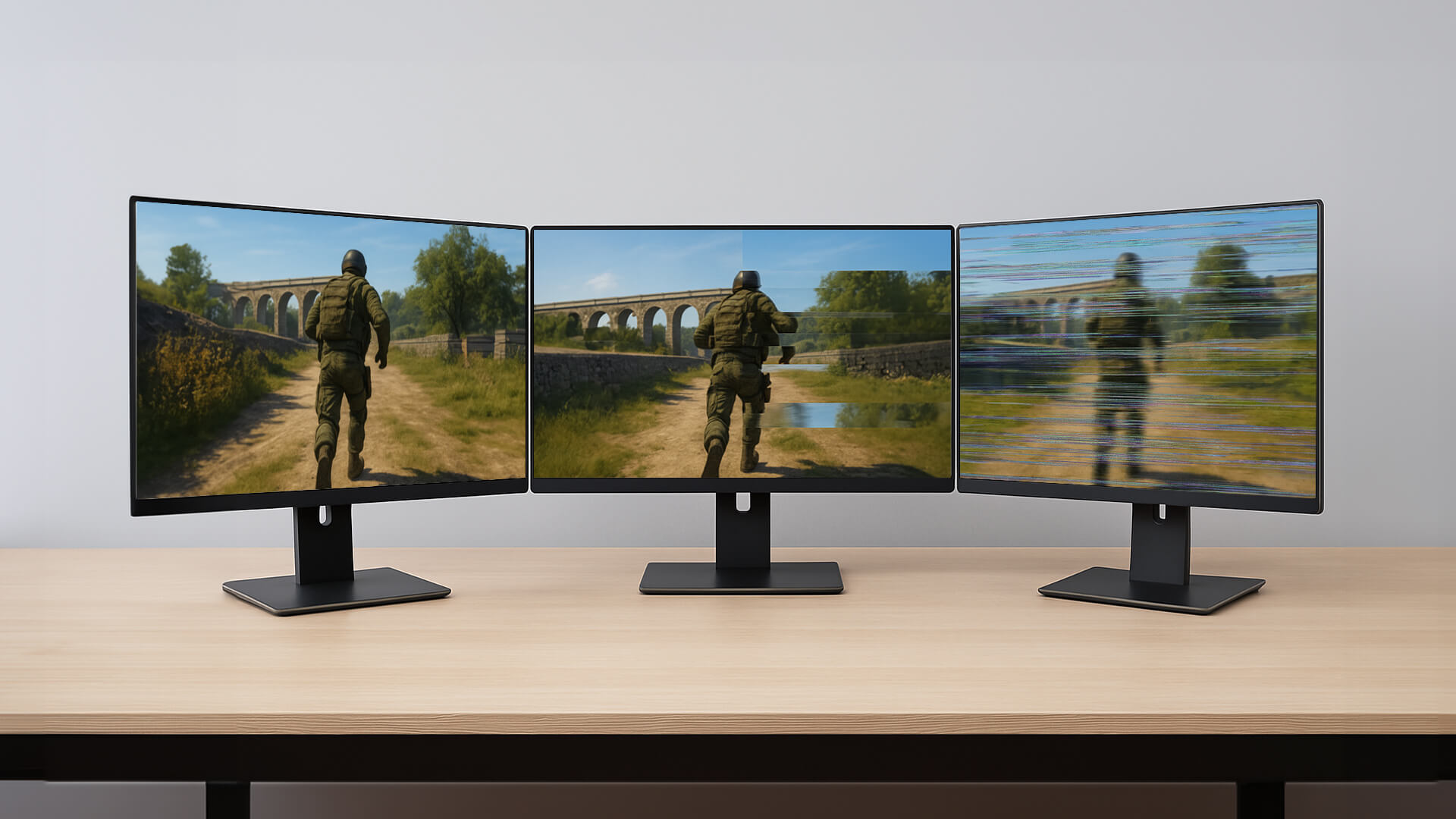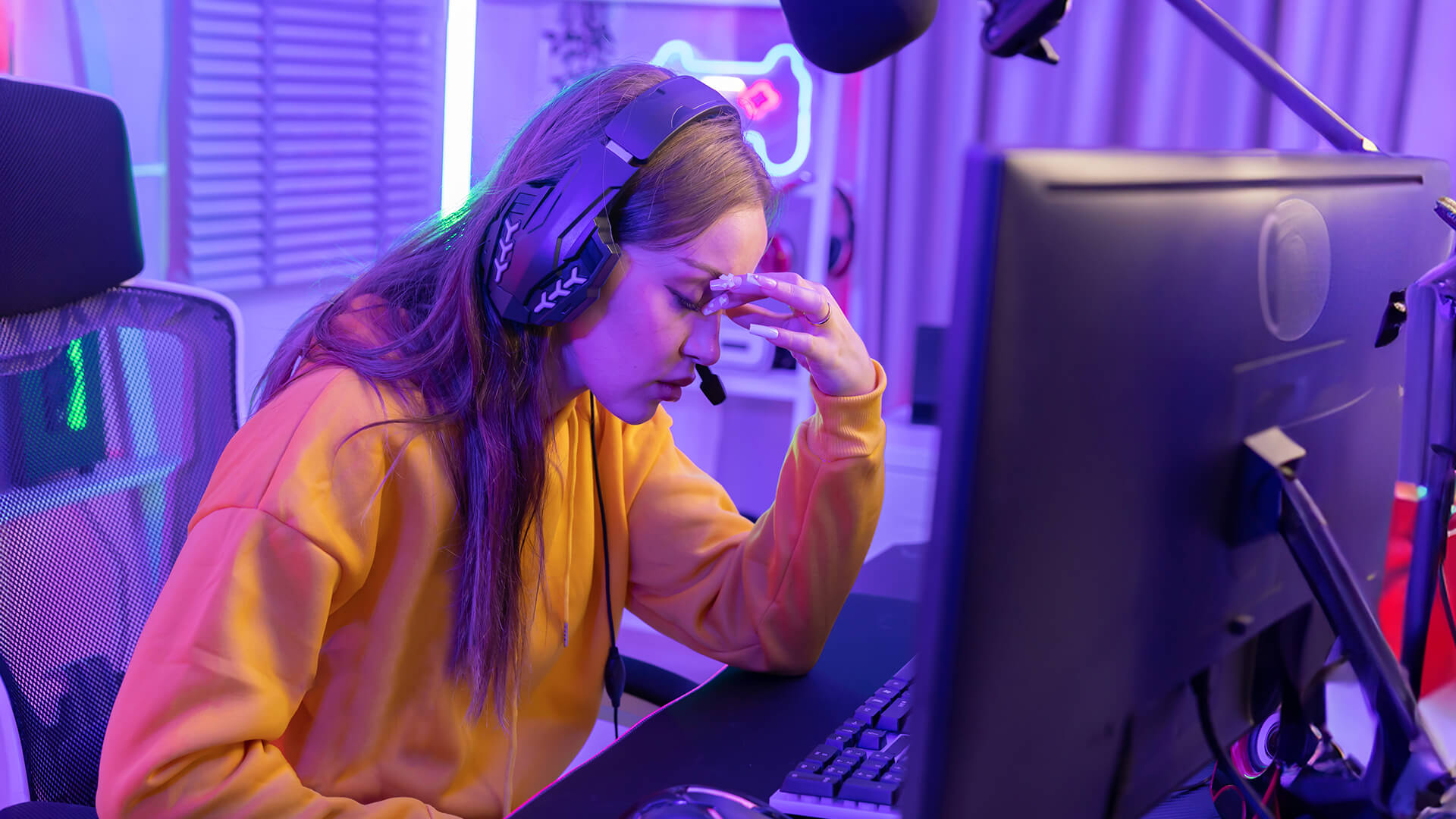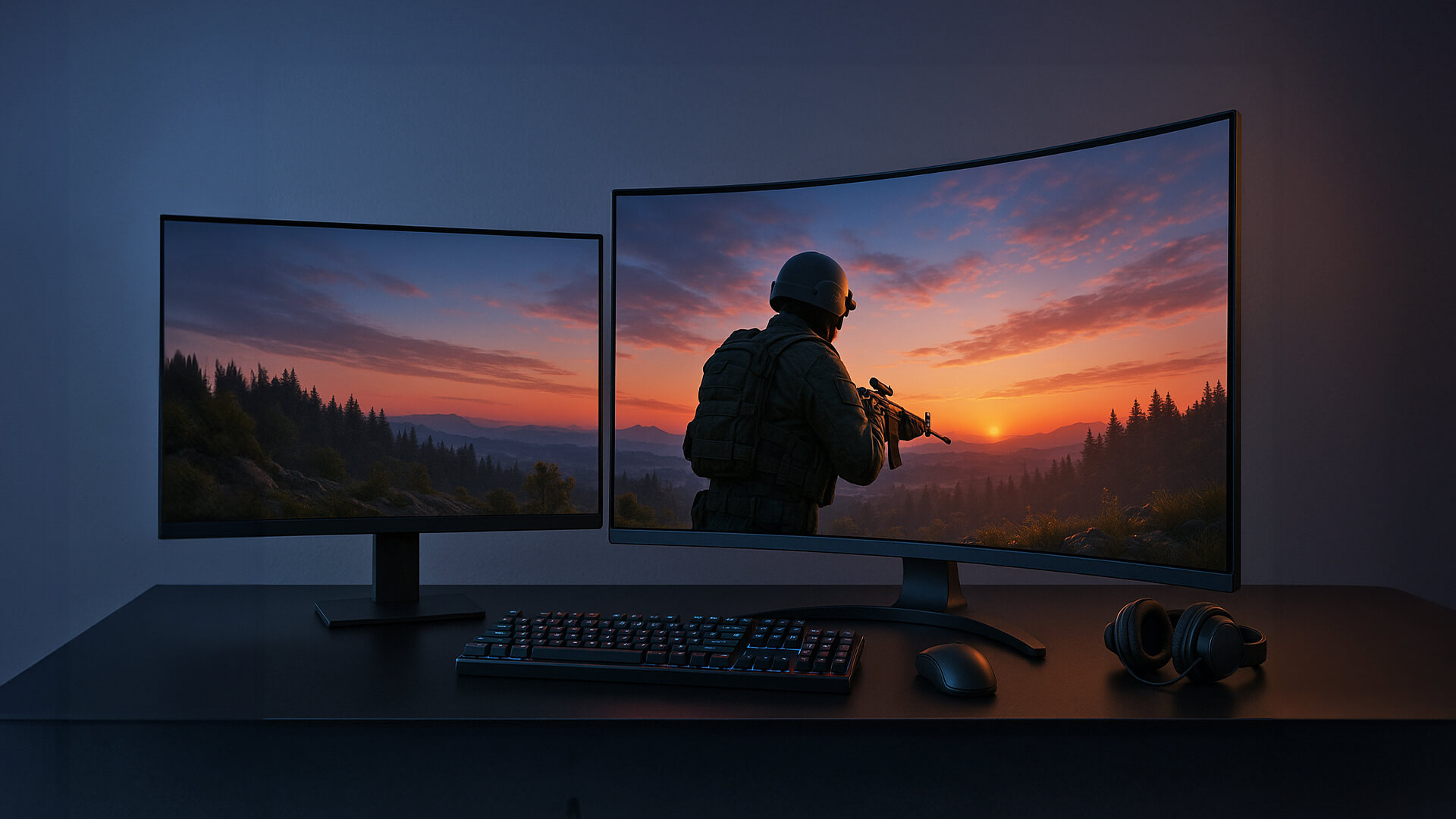POSTED: 19 September, 2025
Monitor Troubleshooting: Fix Flickering, Ghosting & Screen Tearing
A smooth and responsive display can make all the difference, whether you’re battling through fast-paced shooters, grinding ranked matches, or just getting work done. But when your monitor starts flickering, ghosting, or showing screen tearing, it can ruin the entire experience. These issues are common but frustrating, especially for gamers who rely on precise visuals and the lowest input lag possible. The good news is that with the right monitor troubleshooting, you can often fix these problems quickly without needing to rush out for a replacement.
In this guide, we’ll cover everything you need to know about diagnosing and fixing screen flickering, ghosting, and tearing. We’ll also look at preventive steps and recommend hardware upgrades like the best 4K gaming monitor, a curved screen monitor, or reliable budget monitors if you’re planning an upgrade. So without further ado, let’s dive right into it.
Common Monitor Problems Explained:

Before jumping into the actual monitor troubleshooting, it’s important to understand what each of the common issues looks like and why they occur. Many people confuse flickering, ghosting, and tearing because the symptoms can overlap during gameplay or video playback. However, each problem has a different underlying cause and needs a specific type of fix. By learning to identify them correctly, you’ll save yourself hours of trial and error.
What is Screen Flickering?
Screen flickering appears as a rapid, repetitive flashing of the image on your display. Sometimes it’s barely noticeable, but in other cases, it can cause headaches and severe eye strain. Common causes include:
- Refresh rate mismatches between the GPU and the monitor.
- Faulty HDMI or DisplayPort cables.
- Outdated or corrupt graphics drivers.
- Conflicts with third-party apps that run overlays (such as game recording or chat software)
For gamers, flickering is especially distracting when playing titles that demand accuracy and concentration.
What is Screen Ghosting?
Ghosting occurs when you see a faint trail or shadow behind moving objects on screen. It often appears in fast-paced games with high-speed camera movements. Causes include:
- Monitors with slower response times.
- Overdrive settings not properly configured.
- Limitations of panel technology (VA panels are more prone than IPS).
The fix usually comes down to optimising settings or choosing a monitor with faster response times. Gamers who prioritise lowest input lag monitors will find ghosting far less of an issue.
What is Screen Tearing?
Screen tearing happens when the graphics card sends out frames at a different rate than the monitor’s refresh cycle. The result is horizontal splits in the image that look like one part of the screen is out of sync with the other. It’s most noticeable in action-heavy titles where framerates are high.
While it doesn’t damage the monitor, tearing can ruin immersion and make competitive gaming frustrating.
Monitor Troubleshooting: Fixing Screen Flickering
If your display keeps flickering, here are the most effective monitor flickering fixes:
- Check Cable Connections: Loose or faulty HDMI/DisplayPort cables are one of the most common culprits. Try reseating them or swapping in a certified high-speed cable.
- Adjust the Refresh Rate: Go to Display Settings in Windows and make sure your monitor is set to its native refresh rate (60Hz, 120Hz, 144Hz, or higher). A mismatch here often causes flickering.
- Update Graphics Drivers: Outdated drivers can trigger display instability. Use GeForce Experience or AMD Adrenalin to get the latest updates.
- Disable Conflicting Software: Apps that apply overlays (like Discord or third-party screen recorders) sometimes clash with display rendering. Temporarily disabling them may stop the flicker.
If flickering persists even after trying these steps, it may indicate a failing backlight or internal monitor hardware fault. In that case, upgrading to a stable and modern display is the best option.
Monitor Troubleshooting: Fixing Ghosting

To apply a monitor ghosting fix, you’ll need to tweak your monitor’s built-in settings.
- Enable Overdrive: Most gaming monitors have an overdrive (or response time overclocking) option in their on-screen display. Setting it to medium usually reduces ghosting without introducing inverse ghosting.
- Test Online: There are free ghosting test tools online where you can drag high-speed patterns across the screen to check improvements.
- Understand Panel Limitations: VA panels have better contrast but tend to ghost more compared to IPS or TN panels. If ghosting severely impacts your experience, upgrading to an IPS gaming display with faster response times may be the fix.
- Lowest Input Lag Monitors: Monitors designed for esports typically combine fast refresh rates, low response times, and minimal input lag, making them ideal for reducing ghosting issues.
If none of these work, ghosting might simply be a limitation of your display panel rather than a fault. In that case, monitor upgrades become the best long-term solution.
Monitor Troubleshooting: Fixing Screen Tearing
When it comes to how to fix screen tearing, there are several software and hardware-level solutions:
- Enable V-Sync: Found in most game graphics settings, V-Sync synchronises the GPU frame output with the monitor’s refresh rate. It’s an easy fix, but it can introduce slight input lag.
- Use G-Sync or FreeSync: These adaptive sync technologies allow the monitor to dynamically match the GPU’s framerate. They virtually eliminate tearing without the performance hit of V-Sync.
- Frame Rate Capping: Manually capping the game’s frame rate to match your monitor’s refresh rate helps prevent tearing. For example, lock your FPS at 144 on a 144Hz display.
How to Prevent Screen Tearing Long-Term:
Here are some considerations to help you prevent screen tearing long term:
- Choose a monitor with adaptive sync support (FreeSync for AMD GPUs, G-Sync for NVIDIA GPUs).
- Pair your GPU with a high refresh rate monitor.
- Ensure your system performance stays consistent to avoid framerate drops.
This combination delivers smoother gameplay and keeps visuals aligned without stutters or breaks.
Hardware Considerations for Smooth Performance:

If you’ve tried every monitor troubleshooting step and the problems still persist, the issue may not be with your settings but with the hardware itself. Older or budget displays often lack the features needed to keep up with modern GPUs, which makes flickering, ghosting, and tearing harder to manage. In these cases, upgrading to a more capable monitor is the most effective long-term fix.
When choosing a new display, consider how you’ll be using it:
- 4K Gaming Monitors: For players who prioritise stunning visuals and sharp details, the best 4K gaming monitors offer incredible image clarity and ensure that even the latest AAA titles look their best. The higher resolution also helps when working on creative tasks like video editing or design.
- Curved Monitors: A curved screen monitor creates a more immersive experience by wrapping the display into your field of vision. This is especially effective for racing, flight sims, and ultrawide productivity setups.
- Budget-friendly Options: Not every setup requires high-end specs. There are plenty of budget monitors that balance price and performance, making them a solid choice for casual gaming, office work, or secondary screens.
If your main focus is productivity rather than gaming, you might also find our guide to the Best Computer Monitors for Work & Productivity helpful, as it highlights displays tailored for efficiency and comfort.
Preventive Maintenance & Long-Term Monitor Care:
Even the best monitors need proper care to stay reliable. Here are some maintenance tips to extend the life of your display:
- Regular Cleaning: Use a microfibre cloth and avoid harsh chemicals. Dust and smudges can impact visibility and even cause overheating if vents are clogged.
- Keep Software Updated: Always install GPU driver updates and firmware patches for your monitor if available.
- Power Protection: Use surge protectors to prevent damage from sudden power surges.
- Settings Management: Configure separate profiles for gaming and work to reduce strain on both eyes and the monitor itself.
Preventive care keeps your display performing smoothly and reduces the chances of troubleshooting headaches in the future.
Conclusion:
Monitor troubleshooting is all about understanding the root causes of flickering, ghosting, and tearing. In most cases, you can resolve these issues with quick fixes like adjusting refresh rates, enabling overdrive, or turning on adaptive sync features like FreeSync and G-Sync.
But if problems persist, upgrading to a modern monitor designed for gaming or productivity may be the ultimate solution. Choosing the right display ensures smoother performance and a more enjoyable experience.
FAQs:
Why is my monitor flickering on and off?
This can be due to loose cables, incompatible refresh rates, outdated drivers, or even failing monitor hardware. Checking connections and updating drivers is the best first step.
How do I reduce ghosting on my monitor?
Enable overdrive in your monitor settings, avoid extreme overdrive levels that cause inverse ghosting, and consider upgrading to a faster IPS panel if ghosting persists.
Does FreeSync fix screen tearing?
Yes. FreeSync synchronises the GPU and monitor refresh rate dynamically, effectively eliminating screen tearing without adding input lag.
What causes ghosting on monitors?
Ghosting is usually caused by slow pixel response times, which are more common in VA panels. Incorrect overdrive settings can make the effect worse.
Is screen tearing harmful to the monitor?
No, screen tearing won’t damage your monitor. It’s purely a visual issue caused by frame rate and refresh rate mismatches.